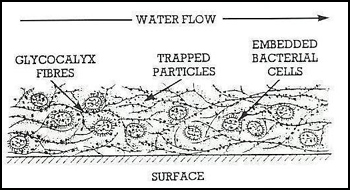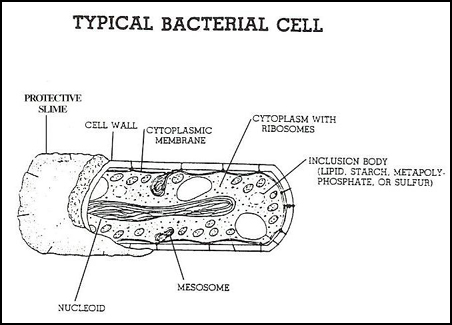|
||||||||||||
BIOFILM CONTROL TECHNOLOGY
The BIO-PURGE program represents a new and innovative strategy for the control and elimination of biological growth in water systems. The approach is designed to address the real problem of biological growth, the biofilm itself and de-emphasize the industry tradition of addressing coliform sampling.
There are two distinct microbial populations present in potable water distribution systems:
- Planktonic - (free floating) micro-organisms present in the system.
- Sessile - (surface attached) micro-organisms growing in the biofilms
The traditional method of monitoring the effectiveness of a disinfection program is simply related to the measurement of the planktonic populations in the system. Such techniques as coliform membrane filtration testing (MFC) and standard/heterotrophic plate counts (HPC) will offer acceptable indications of this type of activity. Unfortunately, these techniques do not take into consideration an area of great concern, which is the existence of a biofilm. Microbiologists have concluded that the MFC and HPC population at any given time can typically be much lower than the sessile population. The smaller planktonic population is more random and variable than the more complex sessile population.
Typical Organisms Associated with Biofilm Growth
- Pseudomonas sp.
- Bacillus sp.
- Aeromonas sp.
- Enterobacter sp.
- Eschericia sp.
The formation of the biofilm is the result of secretions from bacterial cells. Initially, this mucopolysaccaride secretion is a means of providing a protective coating or capsule (called the glycocalyx) for the individual cell. This will occur even with many planktonic cells throughout the system. After this process has been started the individual cells begin to stick together and attach to a surface. As more slime is secreted from the cells and as more cells find their way into the colony, a biofilm is quickly formed. Studies indicate that 10 to 14 days are usually required to reach climax populations and fully developed community structure.


Pseudomonas aeruginosa has been associated with “swimmer’s ear” for many years, and is common in swimming pool environments where filtration or disinfection has been compromised. Unfortunately, over the past several years, incidence of lung related infection due to this bacteria have become more prevalent, especially in the elderly and infant population. The suspected source in many cases has been the aerosolation of drinking water used for bathing, specifically showers. In addition, the organism is also associated with skin disorders (ie, rashes and lesions), and is the most common reason for the shut down of hot tubs and spa.

